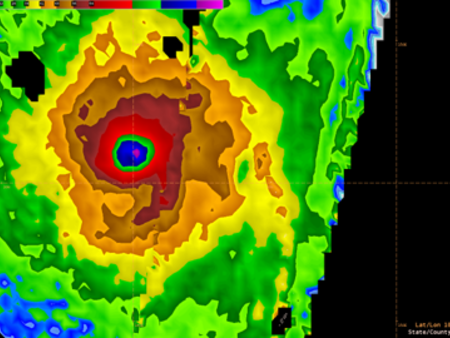The terms "hurricane" and "typhoon" are regionally specific names for a strong "tropical cyclone".
-Warm ocean waters (of at least 26.5°C)
-An atmosphere which cools fast enough with height such that it is potentially unstable to moist convection
-Relatively moist layers near the mid-troposphere (5 km).
-A minimum distance of at least 500 km from the equator
-A pre-existing near-surface disturbance with sufficient vorticity and convergence
-Low values (less than about 10 m/s [20 kts]) of vertical wind shear between the surface and the upper troposphere.
Cape Verde-type hurricanes are those Atlantic basin tropical cyclones that develop into tropical storms fairly close (<1000 km [600 mi] or so) of the Cape Verde Islands and then become hurricanes before reaching the Caribbean.
Storms that reach maximum sustained 1-minute surface winds of at least 50 m/s (major Hurricane) and 65 m/s (super Typhoons)
Structurally, Tropical cyclones (TCs) have their strongest winds near the earth's surface , while Extra-Tropical Cyclones (ETC) have their strongest winds near the tropopause - about 12 km up
They are ranked according to the Saffir-Simpson scale


